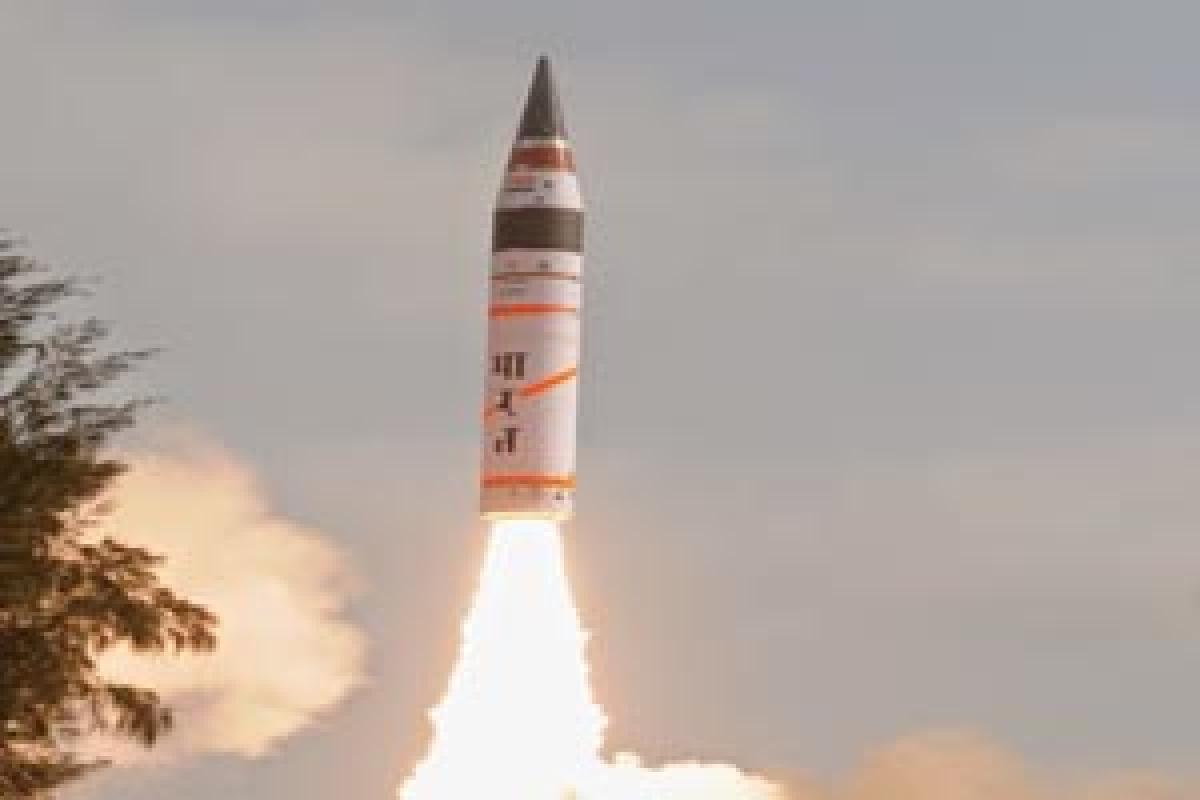Live
- Gurukula zonal level sports meet concludes
- Vagdevi Jr College student selected for national basketball tourney
- Maoist area committee member arrested
- Collectorate staff protest attack on DC
- Villagers urge authorities to continue launch service even after construction of bridge
- MLA Padmavathi launches free lunch for readers
- Police high-handedness sparks outrage in Kodangal
- Khichi elected mayor of Delhi
- Sports enthusiasts encouraged to focus on achieving their goals
- SC agrees to hear plea related to Delhi pollution
Just In

Agni-5, India\'s longest range nuclear capable missile, was successfully test fired from the Kalam Island off Odisha coast on December 26 by the Defence Research and Development Organisation or DRDO.
Agni-5, India's longest range nuclear capable missile, was successfully test fired from the Kalam Island off Odisha coast on December 26 by the Defence Research and Development Organisation or DRDO. This was the first test of the Agni-5 missile after India became a member of the Missile Technology Control Regime, a 35-nation group to check the spread of unmanned delivery systems for nuclear weapons.
The 17-metre long Agni-5 Missile weighs about 50 tonnes and is a very agile and modern weapon system. The surface-to-surface missile is a fire-and-forget system that cannot be easily detected as it follows a ballistic trajectory. India already has in its arsenal the Agni 1, 2, 3 and 4 missile systems and supersonic cruise missiles like Brahmos. India describes the Agni - 5 missile system as a 'weapon of peace,' writes NDTV.
Agni-V can carry a nuclear warhead weighing 1.5 tonnes over a distance of more than 5,000 km. India has already in its armoury four Agni series: Agni-1 with 700 km range, Agni 2 with 2,000 km range, Agni 3 and Agni 4 with with 2,500 km to more than 3500 km range.
Agni missile is part of the Integrated Guided Missile Development Programme started in 1982–83 under the leadership of Dr Abdul Kalam. The Agni missile was initially conceived as a technology demonstrator project, and was later upgraded to a ballistic missile with different ranges.
The ballistic trajectory of a projectile is the path that a thrown or launched projectile or missile without propulsion will take under the action of gravity, neglecting all other forces, such as friction from aerodynamic drag. IGMDP also undertook simultaneous development of: Short range surface-to-surface missile Prithvi; Short range low-level surface-to-air missile Trishul; Medium range surface-to-air missile Akash; and Third-generation anti-tank missile Nag.
The initial Technology demonstrator version had a range of 1500 km but were based on a solid and a liquid stage making for long preparation before firing. Learning from this the production variants of Agni are solid fuel based to allow for swift retaliation against adversaries.
That the Pakistani threat is only a marginal factor in New Delhi's security calculus and Agni is at the heart of deterrence in the larger context of Sino-Indian equation. Missiles of Agni series are developed by DRDO and manufactured by Bharat Dynamics Limited.

© 2024 Hyderabad Media House Limited/The Hans India. All rights reserved. Powered by hocalwire.com







